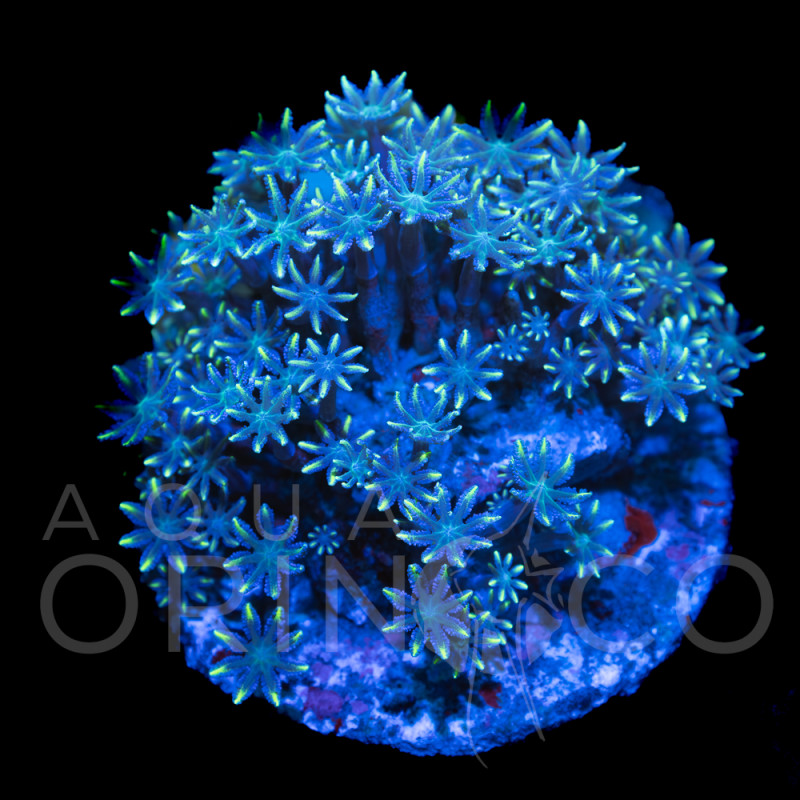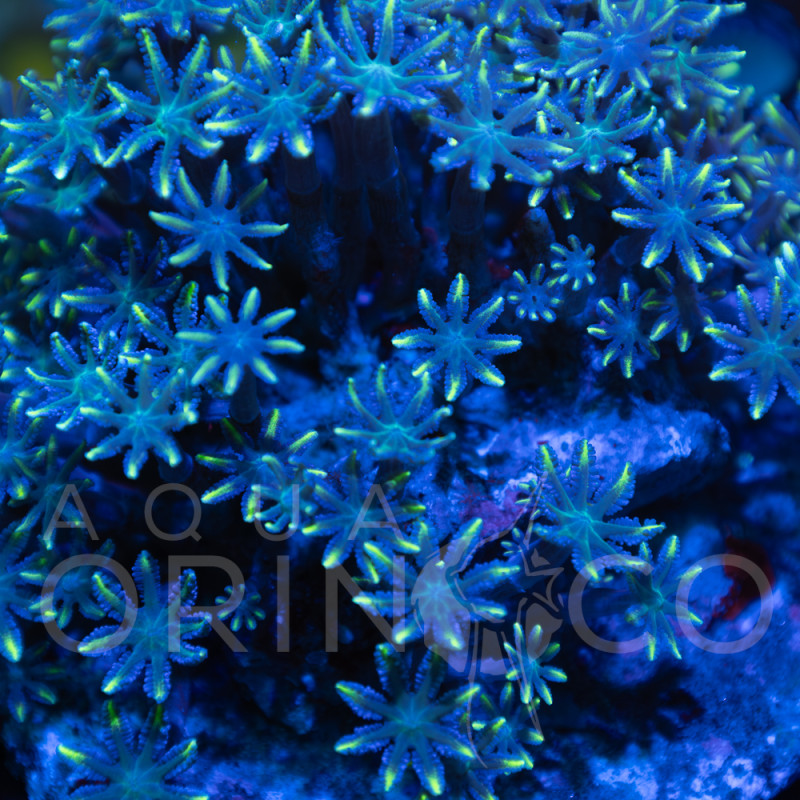More info
Clavularia sp.
Unique piece - "WYSIWYG"!
What You See Is What You Get
Clove polyps are a soft coral which strictly means their polyp segments come in multiples of eight (Octocorallia) as compared to stony corals that come in multiples of six (Hexacorallia). For the purposes of this hobby however, stony corals are corals that build calcium carbonate skeletons and soft corals do not.
There are some grey area corals that don’t neatly fit into the “skeleton” vs. “no skeleton” classification. One such example is a pipe organ coral. It is an Octocorallia soft coral that grows a distinctive red calcium carbonate skeleton. Another example is the topic of this article, the clove polyp. Clove polyps do not form a skeleton that is as obvious as a pipe organ coral, but they do form a connected network of stolons from which their polyps extend. You can see why the official classification of corals goes by the count of polyp segments and not how stony or soft a coral is because it turns out that there are varying degrees of skeleton formation.
Location
Clove polyps are found all over the tropical waters of the Pacific. In particular, they are regularly harvested from the islands of the Indo-Pacific including Fiji, Tonga, Solomon Islands, and the Great Barrier Reef.
Lightning
Clavularia thrive under a wide assortment of lighting. Here at the AquaOrinoco greenhouse we have grown them under both brightly lit as well as dimly lit aquariums. They do not shift colors noticeably and I did not notice a big difference in their growth rate. I recommend starting with medium lighting around 100 PAR to be safe.

Low Light |
Low light translates to about 30-50 PAR |

Medium Light |
Medium Light is between 50-150 PAR |
|
High light |
High Light is anything over 150 PAR |
Water Flow
As for water flow for clove polyps, I like to provide them high flow. Strong Flow provides two main benefits. First, it blows the polyps around in a very pleasing manner. Reef hobbyists often look for corals that sway in the currents and clove polyps are a great candidate to do just that. Second, the additional flow helps keep the colony cleaner. The base of the coral is a network of stolons that can collect detritus if allowed to settle. It is important to prevent the buildup of detritus at the base of the cloves otherwise it can cause the coral to die back.
One other note pertains to placement. I have noticed they tend to do better mounted nearly vertically which again makes it easier to have the strong flow keep their base clean.
Feeding
We generally do not spend a lot of time spot feeding this coral. Clove polyps are photosynthetic so they will get the majority of their nutrition from the lighting provided. They are not a particularly light demanding coral. Anything in the 50-100 PAR range is fine, and they may even be able to tolerate higher light conditions provided they are acclimated slowly to the higher light intensities.
If you do want to proactively feed these corals, I like to either use the cloudy supernate from thawing meaty frozen food such as krill, mysis, or rotifers. I have also fed these corals using a mix of commercially available powered zooplankton. Again, I personally do not go out of my way to feed clove polyps, but it is entirely possible that additional feeding would help these corals thrive. As with any feeding regimen, it’s important not to overfeed because causing a nutrient overload is far worse than the coral not getting something to eat.





